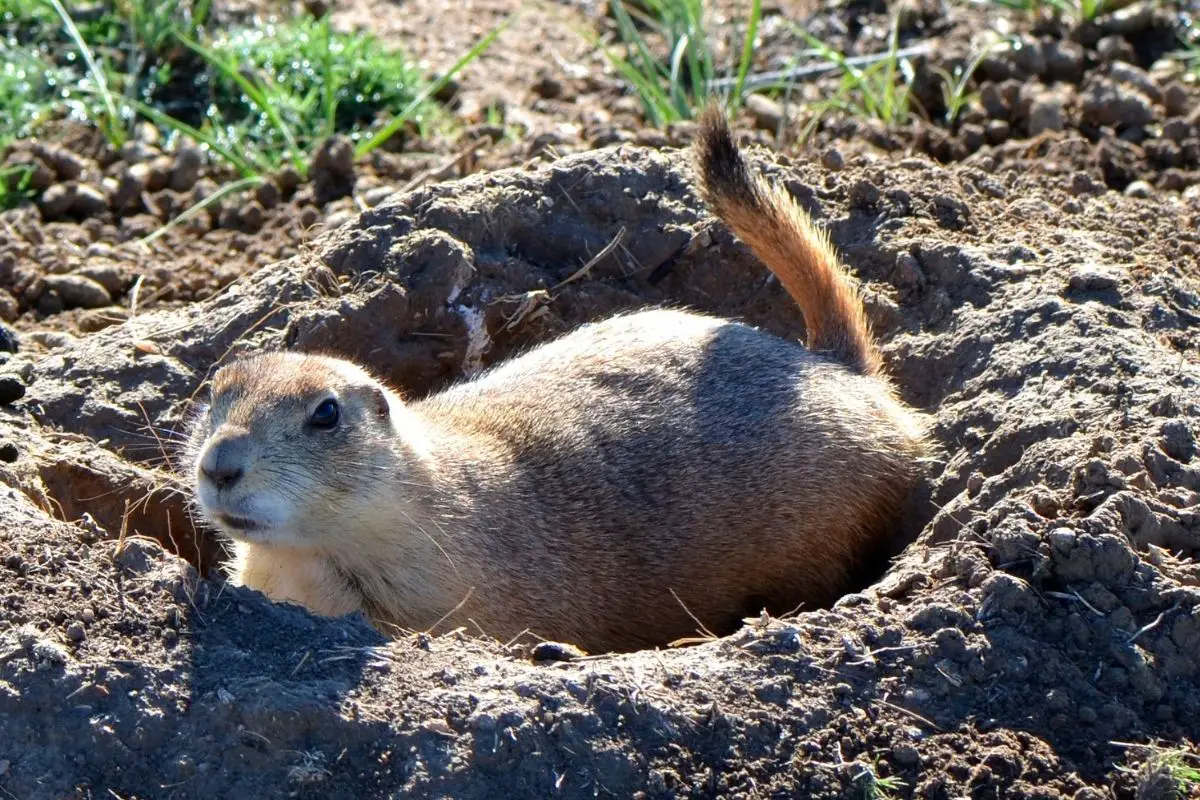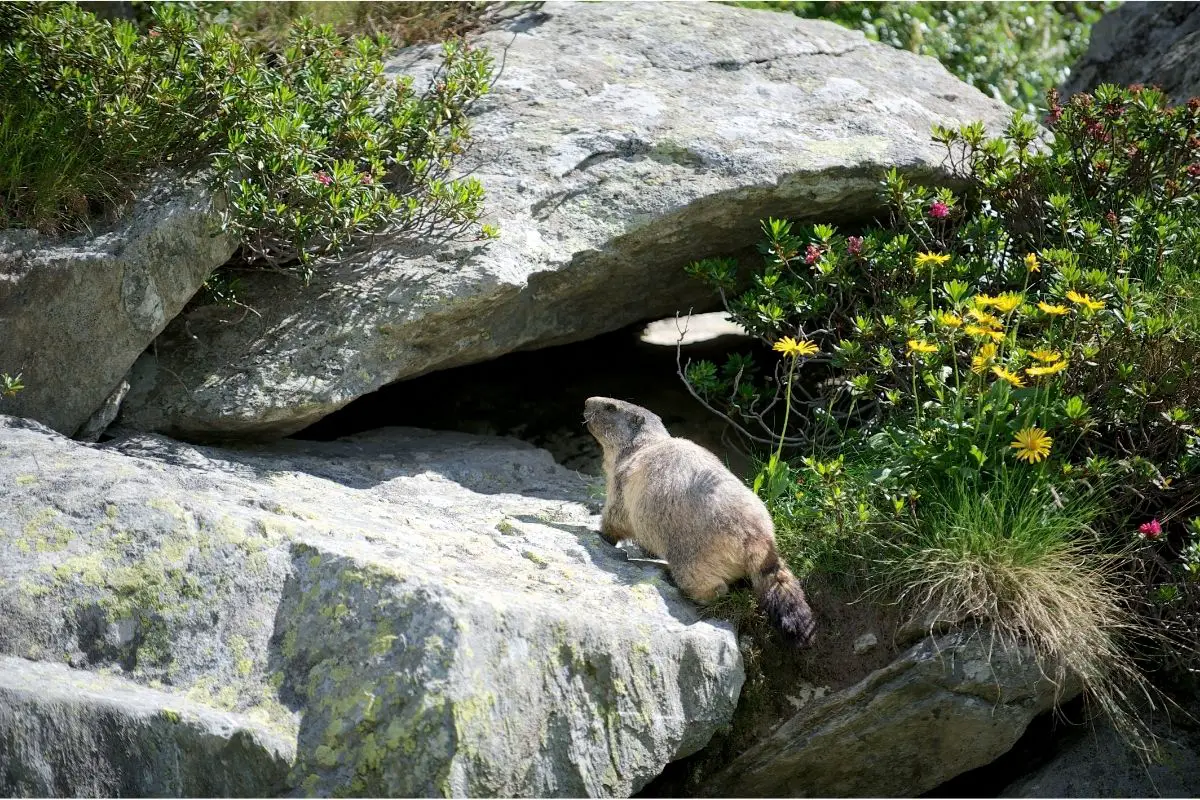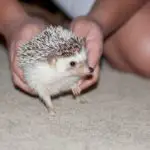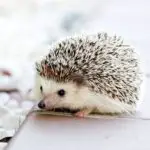When spotting a little furry mammal from afar, it can sometimes be hard to make out exactly what it is. Most of them are small, they all scuttle around quickly and are easily alarmed by us humans.
Hedgehogs can often be mixed in with these other animals, sometimes being harder to recognise when next to their other small furry friends in the animal kingdom.

Groundhogs are one of these animals, similarly small and furry, they are also known as woodchucks, thick wood badgers and land beavers.
They are very celebrated animals, having their own national day and an incredible way of getting around thanks to their teeth and claws.
While they can look similar in stature and like they could both make great pets, there are actually some major differences between hedgehogs and groundhogs that make them quite different animals, so here is everything you need to know about both hogs and how both like to live their lives.
Difference In Looks
Both groundhogs and hedgehogs may not grow too large and have a similar acute frame, but in terms of appearance this is where similarities end between both hogs.
Both belong to different families, the hedgehog is a small mammal of the Erinaceidae family and the groundhog belongs to the brown marmot, meaning they are equipped with different attributes and features to cater to their natural lifestyles.
The biggest giveaway between the two is the keratin quills dotted all over a hedgehog’s back used to fend off predators and which makes them hard to pick up, meanwhile groundhogs are more fuzzy and can be picked up far easier.
Unlike hedgehogs, groundhogs also have very prominent teeth with two large incisors that grow a 16th of an inch per week which are very noticeable in older groundhogs.
Hedgehogs too have pearly whites but they are much smaller, and are only usually seen when they go to bite or have their noses high in the sky looking for a midnight snack.
The huge, curved claws are also a noticeable part of groundhogs that help them build their incredible underground pathways, along with their short and flat tails compared to hedgehogs’ much smaller claws and tails.
In terms of color, a groundhog’s dense gray undercoat gives them a ‘frosted’ appearance while hedgehogs adopt the more browner salt and pepper variants, this also reflects where they’re from with groundhogs originating from North America and Hedgehogs being more common in Europe.
A groundhog is often slightly bigger and fatter than a hedgehog commonly weighing somewhere between 6 and 12 pounds, while smaller more timid hedgehogs usually only weigh up to 1.25 pounds making them far less intimidating to both people and predators.
How Do They Act Differently?

They may both be small, cute and furry, but both hogs actually live very different lives.
Hedgehogs are used to being land roamers, sleeping for up to 18 hours a day and coming out at night to search for their food source and avoiding predators.
Groundhogs, however, skip the land entirely, burrowing underground tunnels where they live most of their life.
This can be done thanks to their sharp and curved claws, these actually become very complex with some even having toilet chambers so they don’t have to relieve themselves on land.
The only real time groundhogs come to the surface is for their much-needed feeding time.
Both hogs are commonly hunted by predators, but their difference in lifestyle means they deal with them in their own unique ways too.
Hedgehogs use their back and tummy muscles to curl up and extend their quills, creating a defensive block that many predators avoid when they spot.
Groundhogs are a bit different as they avoid being seen entirely, burrowing into their underground tunnels to remain safe and have some peace and quiet while sleeping.
This also reflects their expected lifespans. While the safer and more well prepared groundhogs can live up to 6 years in the wild and even 16 in captivity, hedgehogs who are often hunted and at risk of being hit on roads only have a maximum expected lifespan of 5.
One similarity that both actually do share is that they both know how to hibernate, mainly in the winter months surviving on built up fat over the summer, though this is seen as more dangerous to hedgehogs since some fail to gain the right amount of fat in time.
Can You Keep Groundhogs As Pets?
Because of their separate preferences in how they like to live, unlike hedgehogs who can be domesticated with enough patience and bonding time, groundhogs cannot be domesticated.
This is primarily because of their heavy reliance on their underground tunnel systems, however groundhogs are also considered rodents which you can’t legally own in most states, after all their giant claws would probably dig through the bottom of the cage.
What Is Groundhog Day?
If you have seen a groundhog anywhere before, and it wasn’t one scurrying around a field or pavement for some food, then it has probably been waving high in the sky in celebration of Groundhog Day celebrated every year in America and Canada on February 2nd.
The nationally celebrated day features social events filled with food, speeches and entertainment in many states all over the country, but what relevance does the groundhog have? The celebrations are loosely based on the Christian tradition of candela where clergy would distribute candles for winter.
This tradition eventually grew into a myth or superstition that arose in Pennsylvania that went like this: if a groundhog emerged from his burrow on February 2nd to see his shadow due to clear weather, then it would run back underground and winter would continue for six months.
If the groundhog does not see their shadow however, spring will then be said to arrive early, with the whole day being a celebration of the coming of spring.
Conclusion
With these key differences in mind, next time a little critter wanders into your house and you’re not sure if it’s your hedgehog or a groundhog, you can easily tell by how they look, and their love for digging.









